Contra Rogue Corps is a hard pill to swallow. Objectively, it’s not a very good game. Repetitive level design, terrible graphics, and an uninteresting story cripple the game from beginning to end.
Its disastrous soundtrack ranges from nonexistent to head-scratchingly awful, and its mechanics spit in the face of Contra‘s central ethos: fast, frantic gameplay.
As a long-time fan of the series, I’m baffled by the game. Not since Legacy War has a game in the series ventured so far afoul of what makes Contra Contra.
Compounding its woes, Rogue Corps isn’t a particularly good twin-stick shooter. Mediocre at best, it fails to grasp the expediency of the genre, even if it does embrace its bullet-hell chaos.
Despite all of that, Rogue Corps isn’t completely un-fun. When the game fires on all cylinders, it shows flashes of what might have been. Deep within its bones, it has the atoms of a good Contra game.
C-Minus Storytelling
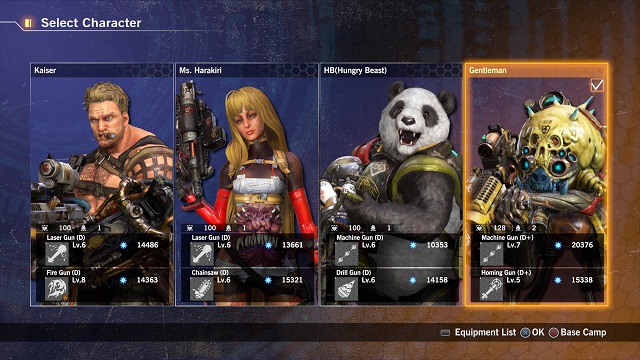
Contra Rogue Corps takes place six years after the events of Contra III: The Alien Wars. You begin as a soldier named Kaiser, a caricature of 80’s action cinema and early DOS-based shooters. Quickly, though, you gain control of the three remaining members of Rogue Corps.
Banished to the post-apocalyptic underground of The Damned City, Rogue Corps is a motley crew of esoteric would-be heroes.
Ms. Harakiri is an Uma Thurman doppelganger with an alien fused to her stomach. Perplexing anthropomorphic panda Hungry Beast is loaded with the brain of a human scientist. Lastly, Gentleman the alien aristocrat is capable of harnessing the power of black holes.
The story doesn’t make sense, and I’m inclined to believe it’s not supposed to. Producer Nobuya Nakazato told us that the game’s story exists because Rogue Corps has four playable characters instead of two:
Contra has always been about two parties fighting together, so the story wasn’t that important, but this time we are up to four players, so you need each character to stand out. It made sense to create the background story for each of them, having a personality for each of them. This is why we decided to put more focus on story this time.
However, from its rushed nature and nonsensical plot to its flat, sophomoric jokes and C-grade schlock, the unbalanced emphasis on narrative ultimately makes it meaningless. Its presentation as a beautiful motion comic is its only saving grace.
The Killing Joke

However, as any Contra fan knows, the story isn’t the central focus of the franchise.
In what becomes an unmanageable glut by mid-game, Rogue Corps never leaves you wanting for weapons. You can acquire them (and their parts) as drops in missions, by building them, or by purchasing them the in-game shop.
Of course, you can also upgrade them by acquiring BAD modifications in missions, which carry myriad buffs such as increased damage or reduced cooldowns.
Weapons also become more potent as characters use them. Using weapons increases their level, and weapon affinity increases as characters use each class. Consequently, one character may be more proficient in close-range weapons while another is a master of machineguns
In my 12 hours with the game, I’ve come across many of the game’s weapons and variations, including machine guns, shotguns, grenade launchers, missile launchers, and lasers. Some are fully automatic, some fire in short bursts, and others ricochet or use heat-seeking ammunition.
This diversity adds a thin layer of strategy to the game’s gunplay but only minimally. Overall, I found that a fully maxed-out automatic machine gun, paired with a high-level flamethrower or heat-seeking missile launcher, worked fine for every encounter.
Classic weapons, like the spread gun, are relegated to special weapon pickups in-stage, and they carry a limited amount of ammo. These augment your arsenal, but none turn the tide of battle.
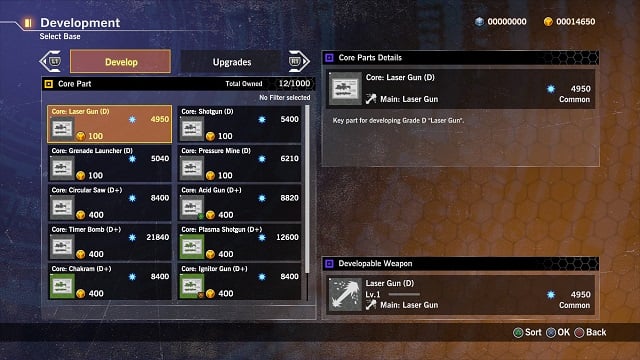
There are other ways to take down aliens in Rogue Corps. Each character has a melee dash attack that acts both offensively and defensively. Like many twin-stick shooters, the dash provides you with a moment of invulnerability as you slide forward or backward. It always deals a bit of damage if it hits an enemy, making it useful in a pinch.
Each character has a unique ability that gives them buffs and advantages. Kaiser, for example, whips out a powerful machine gun/spread gun combo that devastates foes. Dodge speed and melee damage define Ms. Harakiri’s special. Hungry Beast drops a row of automated turrets that distract most enemies, and Gentleman harnesses the power of a tiny black hole for crowd control.
Every member of Rogue Corps can also perform a flowery execution move. However, they only affect some of the game’s hardier, more persistent enemies. The shortlist, though, does not include the game’s hulking bosses or the game’s run-of-the-mill minions, severely limiting its use.
Body parts, such as brains, eyes, and skeletons, let players upgrade each character by giving them specific buffs such as increased health, counterattack capabilities, and elemental resistance. These upgrades can drop throughout each of the game’s missions after beating powerful enemies and assigned to characters via a surgery mechanic at the main base.
The biggest issue Rogue Corps faces, though, is that its gunplay isn’t very compelling. In any other twin-stick shooter without the Contra name, it might be serviceable. However, when nearly 100% of your playtime is spent shooting while slowly walking backward, what might initially be fun quickly becomes a chore. That’s not to mention the words “slow” and “Contra” should never share the same universe.
Tantamount to heresy, you can’t shoot up, severely limiting the game’s verticality and freedom of movement. Instead, you have to jump to hit any enemy above you, flying or otherwise. Nakazato assured me that certain weapons in the game do, in fact, shoot up. However, after all this time with the game, I’ve yet to find them.
On top of that, your weapons overheat. I’ll just let that fact simmer with series fans…
Compounding the game’s sluggish, metered shooting, the only real way to hit targets is to aim with the right stick, which slows you down to a crawl. Shoot without aiming, and you’ll run right into enemies and take damage. Either choice is frustrating at best, especially when games like Nex Machina, Resogun, and Nuclear Throne consistently do it better.
Leveling the Playing Field
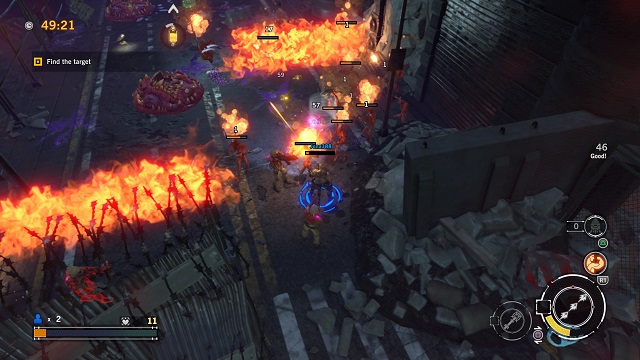
Rogue Corps has a lot of levels. Looking at the game’s trophy list, it appears there are seven chapters, where the first three have six levels each. If my math is correct — and each section has a similar number of levels — Rogue Corps has 42 stages.
The thing is, Rogue Corps recycles many from earlier parts of the game. To give you an idea of how quickly this happens, the first level of Chapter 2 is a level from the previous chapter, just with slightly harder enemies. Making matters worse, most levels in Rogue Corps are dull corridors without much in the way of verticality. The jumping sections that do appear are often hard to navigate because of the game’s camera.
Isometric, Rogue Corps‘ camera often shifts perspective during a level. Sometimes, the camera provides a top-down view; sometimes, it gives a more traditional 2D, side-scrolling view. However, it’s always stationary in each section of the level. This design complicates movement, especially when traversing hanging platforms that require precision movement.
While I don’t mind the 3D perspective and design of Contra Rogue Corps, I would have preferred a different camera set up. Perhaps a 2.5D perspective would have worked better, or a completely top-down view. A free-roam camera would have been welcome over what’s available here.
Notably the game’s visuals look utterly awful. It looks like a PS2-era shooter or the potato version of a current-gen title. Its muddiness, though, impacts gameplay as enemies and projectiles sometimes blend into backgrounds. From loftier heights, some enemies disappear entirely with the camera so high above the action.
Luckily, hordes often grow to such a size that losing a handful of enemies isn’t an issue. Indeed, it’s when one or two enemies remain in a section that things can turn into a pseudo Where’s Waldo.
I do, however, appreciate the inclusion of defensive items in each of the levels. Barrels provide ways to burn, shock, or acidify hordes of enemies. Sandbags provide strangely impenetrable cover for foes but force you to employ a focused strategy on the game’s higher difficulty levels, and act as barriers for you when things get tough.
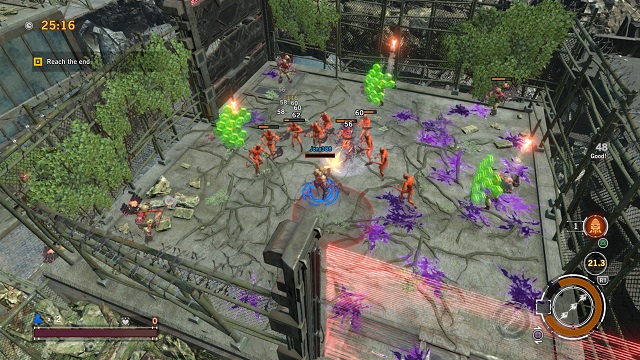
Pros:
- Beautiful comic-book style presentation
- Iconic weapons
- Classic enemies
- Unique character abilities
- Tons of customization options
Cons:
- Terrible graphics
- Terrible soundtrack
- Terrible story
- Repetitive gameplay
- Grinding, slow progression
- Forced, pedantic humor
- Weapons overheat
I had a hard time writing this review. In fact, it is most likely the hardest review I’ve ever written. I wanted to like this game. I tried very, very hard to.
When I first played the PlayStation 4 demo a week ahead of the game’s release, I was disappointed. Very disappointed. I suppressed that, though, when I played the game a few days later at Twitch in Seattle, Washington. There, playing with other journalists and streamers, I had a great time. The game’s 4v4 PvP mode was an absolute blast, and couch co-op was a lot of fun.
But after I got home and played more of Rogue Corps alone, in a familiar place without all the pomp and circumstance of a launch party, I found nothing changed. Disappointment crept back in. Because of that conflict, this is the fourth review I’ve written for Rogue Corps in as many days, each one a vicious fight with my feelings toward the game.
Ultimately, I had to do the hardest thing: rate the game poorly. It’s something in which I never find joy.
The straw that broke the camel’s proverbial back was when I couldn’t get a single match in co-op or PvP on the day of the game’s release. With no one to play with, both modes are essentially dead on arrival — at least on PS4.
Some people will enjoy this game for what it is. Hell, I’ve found some joy in it myself — and it’s possible I’ll play it a little bit more. But Rogue Corps‘ problems far outweigh its strengths, making it a hard game to recommend to anyone, much less Contra fans.
[Note: A copy of Contra: Rogue Corps was provided by Konami for the purpose of this review.]

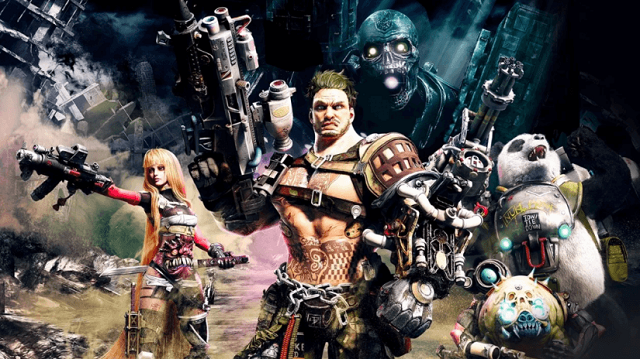





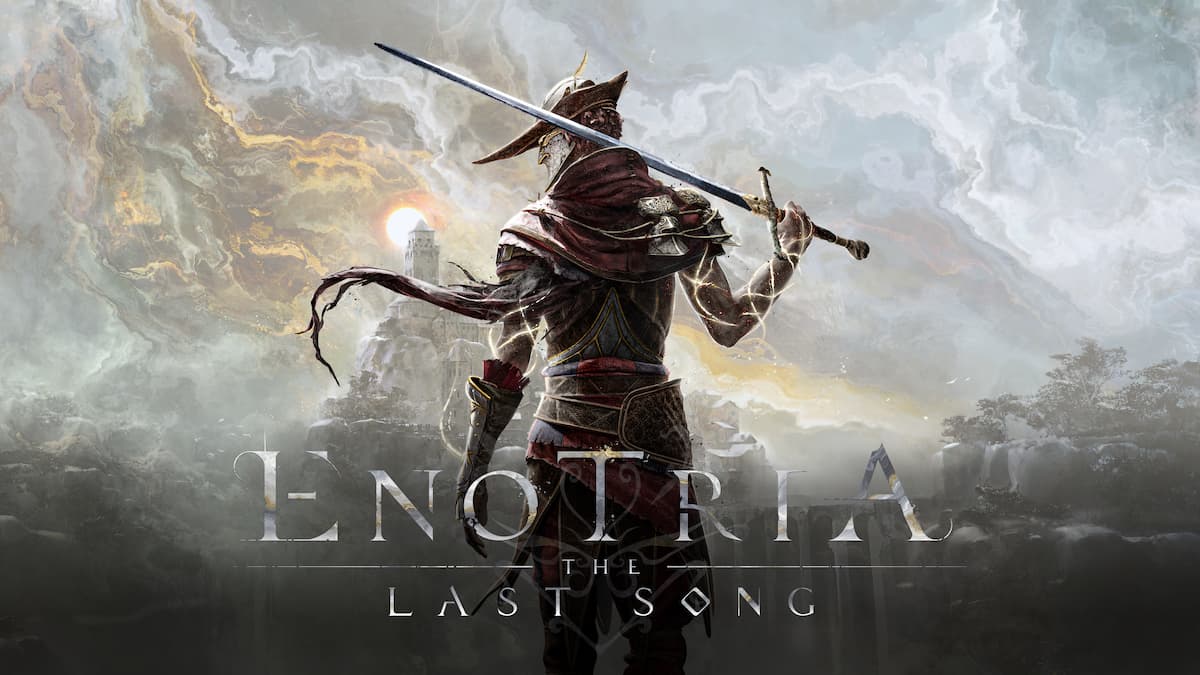
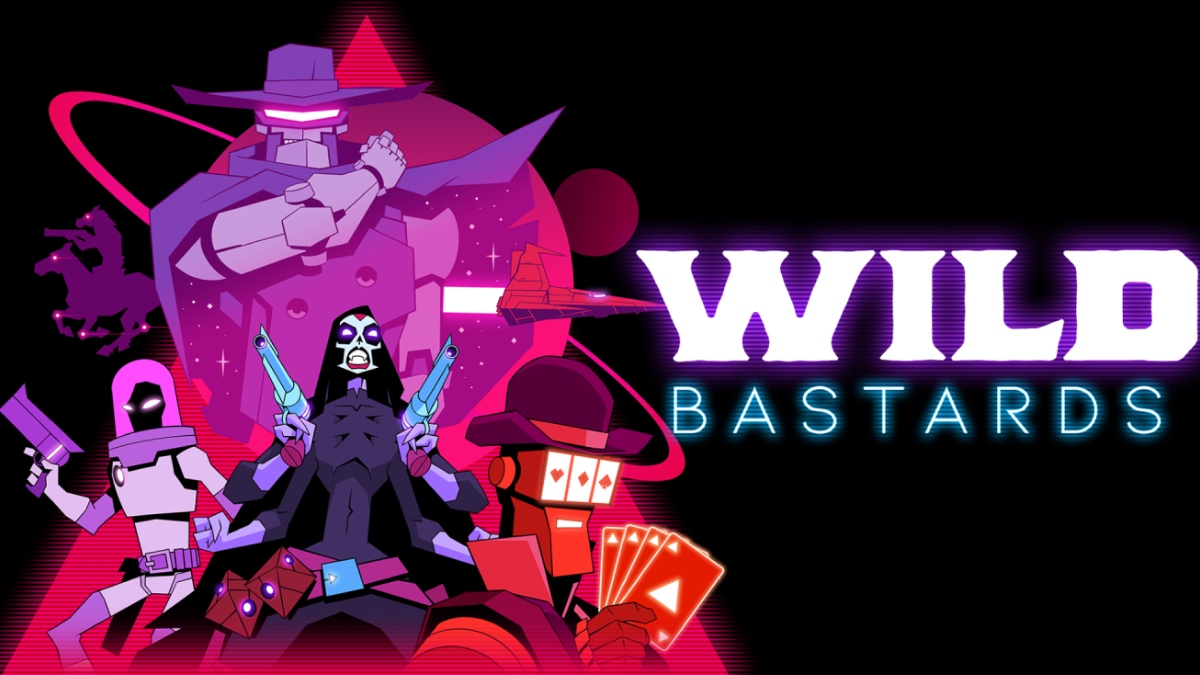

Published: Sep 25, 2019 06:53 pm